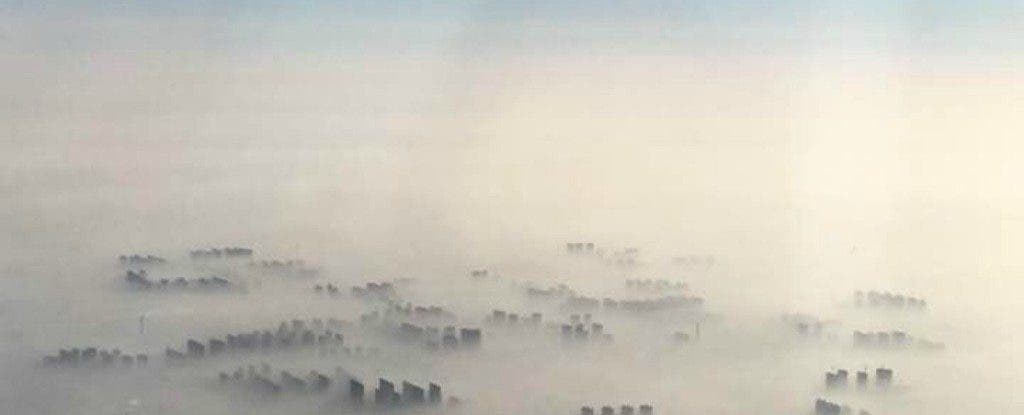As we previously reported, China is experiencing a dramatic smog crisis – again. For someone who’s never been to China, it’s hard to emphasize just how severe this problem is. Recently, aerial photos showed that you can barely see the top of the skyscrapers in Beijing because of the smog.

This photo tweeted by CNN chief national security correspondent Jim Sciutto shows just how bad the smog situation has gotten and how much it has enveloped the Chinese capital. The main cause of the smog is, of course, air pollution. Last week, the concentration of PM 2.5 in Beijing was as high as 186 µg/m3, which is considered unhealthy, being almost four times over the “good” air quality.
The problem is exacerbated by weather. It’s been really cold in China recently, which caused the city to burn more coal to heat themselves. Burning coal eliminates particulate matter, which then gets trapped by the cold air like a blanket. The air in Beijing is
The air quality in Beijing is often appalling, but it gets even worse in the winter when the cold air traps the pollution in the city. In mid-January 2013, Beijing’s air quality was measured on top of the city’s US embassy at a PM2.5 density of 755 micrograms per cubic meter, which literally went off the charts. The US Environmental Protection Agency’s air quality index stops at 500.
A 2015 study found that smog kills on average 4,000 people every day in China.
“Air pollution is extensive in China, with the highest particulate concentrations observed south of Beijing (e.g. Xingtai / Handan) [..]. Extensive pollution is not surprising since particulate matter can remain airborne for days to weeks and travel thousands of kilometers. The corridor south of Beijing contains the highest pollution concentrations and, as discussed below, many of the largest sources. During this study, the southern coastal area experienced somewhat better air quality, possibly linked to greater rainfall,” the study wrote at the time.


